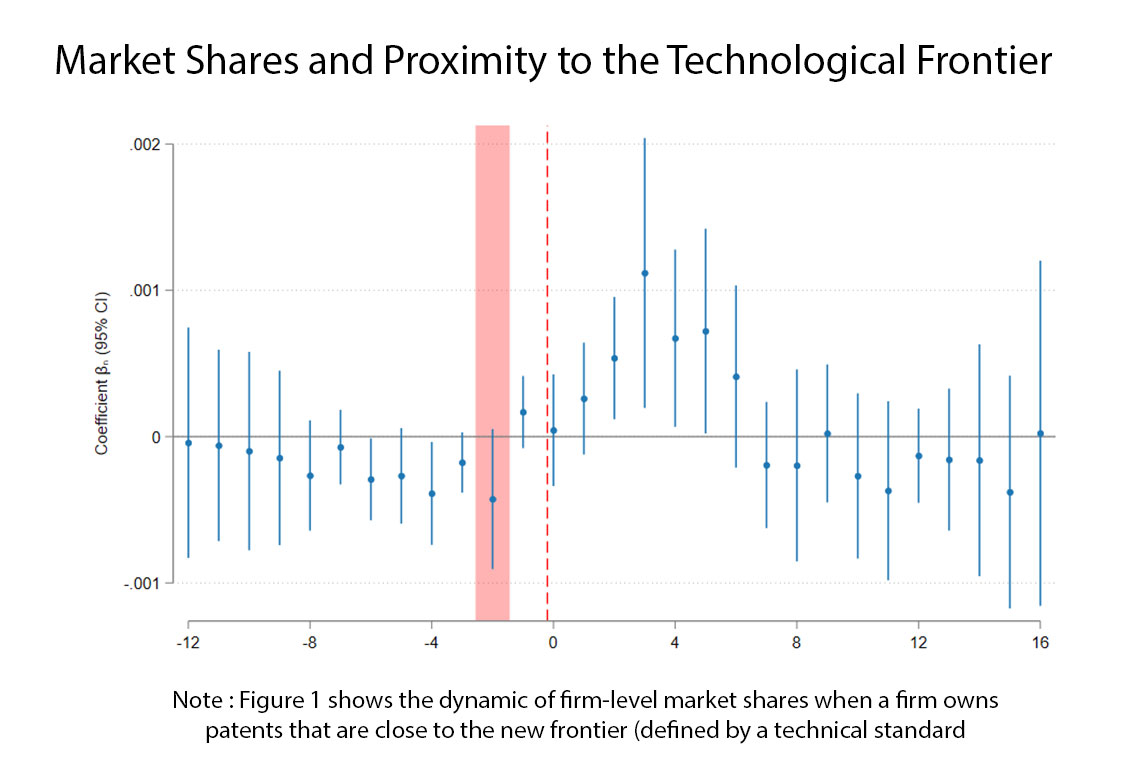
Working Paper Series no. 876: Patents that Match your Standards: Firm-level Evidence on Competition and Growth
When a technology becomes the new standard, the firms that are leaders in producing this technology have a competitive advantage. Matching the semantic content of patents to standards and exploiting the exogenous timing of standardization, we show that firms closer to the new technological frontier increase their market share and sales. In addition, if they operate in a very competitive market, these firms also increase their R&D expenses and investment. Yet, these effects are temporary since standardization creates a common technological basis for everyone which allows followers to catch up and the economy to grow.
The development and production of goods and services is often subject to a myriad of technical standards. From payments systems to specifications for door frames or autonomous vehicles, industrialized societies rely heavily on technical standards in every sector of the economy. By defining a common set of rules, guidelines and specifications, standardization guarantees the interoperability
of devices, compatibility of inputs, or the safety and quality of products at the benefit of both producers and consumers. Technological standardization also entails the selection of one technology among competing ones as it aims at assuring the widespread proliferation of the best technologies and practices within each industry. In this sense, the process of standardization goes hand in hand with technological progress: when new technologies emerge, new standards are defined in order to facilitate their large-scale adoption.
Yet, the ability of firms to adapt to the new standard -which we refer to as the new technology frontier depends on their past technological choices. Indeed, some firms -given their innovation history could be technologically better prepared to deploy the technologies described in the new standard. As such, firms close to the new frontier may have an immediate competitive advantage and benefit from a shift in market power in their favor. This raises a well-known trade-off between rewarding successful innovations and avoiding the creation of monopolies. This paper contributes to the debate. By introducing a new measure of proximity of firms to the technological frontier, we show how the selection of one technology among competing ones through standardization affects competition, innovation and growth.
Our new measure of proximity to the frontier uses text analysis to study the extent to which the semantic content of firms’ patents overlaps the content of a newly issued standard. Hence, we use this measure to study the impact of standardization at the firm and sectoral level.
We show that, when a new standard is released, firms closer to the new technological frontier gain immediately in terms of sales and market shares. We also find that, if the market is competitive, frontier firms invest more in R&D and capital formation while this is not the case if the level of competition is too low. These results are consistent with the interpretation of standardization as a shock that reduces the level of competition, benefiting technological leaders. Yet, these effects are only temporary. In fact, standardization aims at creating a common ground which allows laggards to catch up in the long-run through spillovers. We show that this mechanism is in place and that the catching-up of followers ultimately drives higher long-term sectoral growth.
Hence, we conclude that standards overall do not create permanent monopolies or lead to rent seeking behavior. On the contrary, they encourage innovation in the whole industry and contribute to economic growth in the long-run.
Download the PDF version of this document

- Published on 06/24/2022
- 60 pages
- EN
- PDF (2.39 MB)
Updated on: 06/24/2022 16:55
